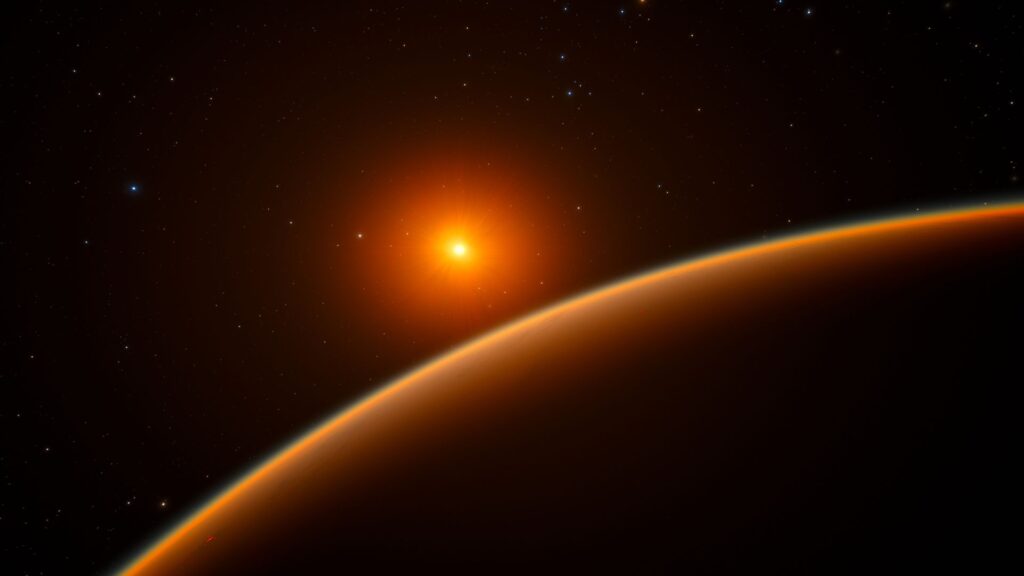What is a Super-Earth?
A Super-Earth is an exoplanet with a mass greater than Earth’s but significantly less than that of gas giants like Neptune or Uranus. They can be rocky, watery, or a combination of both and often reside within their star’s habitable zone.
LHS 1140 b: New Findings
LHS 1140 b, an exoplanet located 48 light-years away in the constellation Cetus, has recently been studied by a team led by Université de Montréal. Originally thought to be a miniature Neptune with a thick hydrogen atmosphere, new data from the James Webb Space Telescope (JWST) suggests that it might instead be a water-rich or rocky super-Earth.
Previous Assumptions
LHS 1140 b was initially believed to be a small Neptune with a thick, hydrogen-rich atmosphere. This classification was based on its size and presumed composition from past telescope studies.
Revelations from JWST
New data from the James Webb Space Telescope (JWST) has changed scientists’ perceptions of LHS 1140 b. The findings suggest the planet might lack a gas envelope and instead have a rocky or water-rich surface. Dr. Charles Cadieux, the study’s lead author, highlighted the potential presence of liquid water, making the planet a candidate for further habitability research.
Orbit and Potential for Life
LHS 1140 b orbits a red dwarf star within its habitable zone, where conditions may allow liquid water to exist. The JWST data, along with information from other space telescopes, indicate a nitrogen-rich atmosphere similar to Earth’s. Ryan MacDonald, a contributing NASA Sagan Fellow, emphasized that this is the first observation of such an atmosphere on a potentially rocky or icy world.
Water Composition and Climate Predictions
The study estimates that water could constitute 10 to 20% of LHS 1140 b’s mass. Future models suggest a “snowball” state with a large marine area and a central temperature around 20 degrees Celsius, conditions conducive to life.
Overview of LHS 1140 b

- Discovery and Characteristics: Discovered in 2017, LHS 1140 b orbits the red dwarf star LHS 1140, located about 49 light-years away in the constellation Cetus. It is approximately 1.4 times the size of Earth and nearly 7 times more massive, indicating a dense, possibly rocky composition.
- Potential for Habitability: Situated in its star’s habitable zone, LHS 1140 b receives about half the sunlight Earth gets, creating a unique environment for potential life.
- Advantages for Observation: The planet transits its star, facilitating the study of its atmosphere and composition. Despite its proximity and favorable observation conditions, its atmosphere and surface conditions remain subjects of ongoing research.



![kihikila.in[earth]](https://www.kihikila.in/wp-content/uploads/2024/07/kihikila.inearth.jpg)
